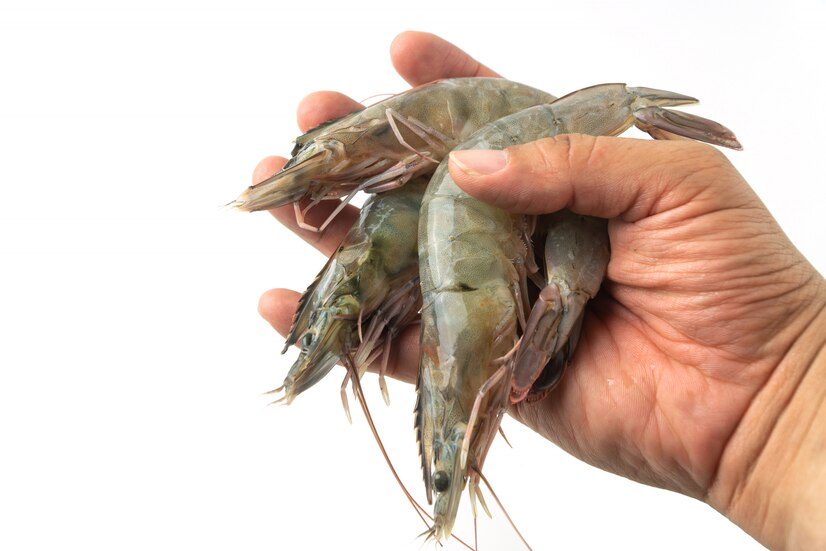Cultivating Vannamei Shrimp with Biofloc System
Vannamei shrimp biofloc has become a popular cultivation system lately. Biofloc technology was first applied by Dr. Yoram Avnimelech in Israel and experienced immediate success. Finally, the biofloc system was also implemented in shrimp ponds in Indonesia.
In a way, the vannamei shrimp aquaculture biofloc system is a form of innovation to address feed problems experienced by farmers. The reason is by implementing the biofloc system, the shrimp’s natural feed supply becomes more abundant.
Farmers who want to apply the biofloc system to vannamei shrimp cultivation must practice it correctly because a bit of wrong in practice can be fatal.
Therefore, here we have summarized the method of cultivating vannamei shrimp using the biofloc system, which you can use as a reference.
Also Read: Get to Know Myo (IMNV) Disease in Vannamei Shrimp and Its Characteristics
What is the Biofloc System?
Biofloc is a bunch of microorganisms such as bacteria, protozoa, fungi, plankton, and organic matter from undecomposed waste.
While the biofloc system attempts to utilize leftover shrimp feed waste to become microbial feed, the rest of the feed waste will be degraded, and the microbes in it will develop and multiply until, finally, the floc is produced.
Floc can be a good source of protein for shrimp. This is because decomposed organic compounds contain carbon (C), hydrogen (H), oxygen (O2), nitrogen (N), and phosphorus (P) compounds.
With the vannamei shrimp biofloc, the farmers can reduce operational costs, which are usually used to purchase feed. This is because the biofloc system can lessen the Feed Conversion Ratio (FCR) while minimizing disease outbreaks.
However, keep in mind that the biofloc system does not affect overall farm productivity because the microorganisms formed only serve as additional feed.
Vannamei shrimp cultivation using the biofloc system can be applied to start from intensive to super-intensive system ponds that have high stocking densities. However, firstly the pond must have a high level of aeration with the appropriate wheel position. The pond must be covered with concrete or high-density polyethylene (HDPE), as well as additional pellets and molasses.
In addition, farmers must always carry out biofloc control during vannamei shrimp cultivation.
How to Cultivate Vannamei Shrimp with the Biofloc System
Until now, many Indonesian shrimp farmers are interested and have applied the biofloc system. However, few also experience failure due to a lack of understanding of this technology.
Therefore, here is a method of cultivating vannamei shrimp with the biofloc system that you can practice.
1. Prepare the Pond very Well
The vannamei shrimp biofloc system can only be applied in some ponds. Particular standards must be met so that the cultivation of vannamei shrimp goes well and does not suffer losses.
The standards for pond ponds that must be met include pond sizes adapted to the cultivation system, ponds that do not leak and have been coated with thick HDPE concrete or plastic, sound aeration systems, and pond heights ranging from 0.8-3 meters.
2. Choose the Right Probiotic Bacteria
The vannamei shrimp biofloc system relies on probiotic bacteria for each pond. Bacillus subtilis is a type of probiotic bacteria that can be selected because this bacteria can decompose nitrogen elements properly and can maintain water quality.
Another type of bacteria that can be used is Bacillus cereus which can form bacterial flocs while controlling the growth of green algae.
3. Make Biofloc Starter
After selecting probiotic bacteria, the next step is to make a biofloc starter. This stage is the same as fermentation to increase the number of bacteria in the pond, which functions as a quality guard for Biopolymer (PHA), which helps the process to suppress harmful pathogens.
Also Read: Tiger Shrimp vs Vannamei Shrimp: Which One is Better for Cultivation?
4. Spread High-Quality Shrimp Fry
When the ponds with biofloc technology are ready, farmers can start spreading the shrimp fry into the pond. However, to get the best quality cultivation results, choose high-quality and certified fry.
5. Perform Proper Feed Management
When the flock has not been formed, farmers can provide feed like ordinary vannamei shrimp cultivation. For example, feeding in pellets twice a day according to needs.
Then when the flock has begun to form, you can start reducing feeding because this is where the role of floc is as a natural food source for shrimp. With this flock, farmers can reduce FCR and save farm operational costs.
6. Ensure Dissolved Oxygen Supply (DO) is fulfilled
When choosing to use biofloc technology, farmers must ensure a continuous supply of dissolved oxygen (DO). This is because ponds that lack an oxygen supply can cause the shrimp in them to die.
To ensure that the supply of dissolved oxygen (DO) is met, farmers can use aerators or waterwheels as additional tools to supply extra oxygen. In addition, make sure the number of aerators or water wheels per the pond’s area.
In biofloc vannamei shrimp farming, the aerator or waterwheel not only acts as an oxygen supply but also keeps the biofloc suspended. However, it should be noted that high levels of suspended biofloc biomass can cause a decrease in pond water quality and ultimately result in crop failure.
Advantages and Disadvantages of the Biofloc System
The biofloc system is only sometimes superior to the vannamei shrimp farming system. There are positive and negative sides to this cultivation system. Following are the advantages of biofloc technology:
- Very high biosecurity
- Production capacity and carrying capacity are usually 5-10% higher
- Shrimp grow bigger with lower FCR
- 15-20% lower production costs
Meanwhile, the shortcomings of the biofloc system include the following:
- Requires a high energy supply for the aerator
- Failure of energy supply for more than 1 hour can be fatal and critical
- The biofloc pond must be lined
- Technicians must receive specific knowledge and training to understand this technology fully.
Also Read: How to Cultivate Vannamei Shrimp from Preparation to Harvest
Successful Vannamei Shrimp Cultivation with DELOS
Implementing the vannamei shrimp biofloc system might be even more difficult for the farmers if you need help understanding this technology as a whole. Just a little wrong, it can be fatal for shrimp farming that is done.
For the vannamei shrimp farming that you are doing to be successful and run well, you can consult with DELOS. The DELOS team is ready to help you manage your shrimp pond and provide recommendations for problems you are experiencing.
DELOS Farm Management is also integrated with the AquaHero application, making it easy for farm owners and farm technicians to monitor their shrimp ponds daily.
Need help with supply issues for pond needs? DELOS also has a Supply Chain Integration program, namely AquaLink. We can help connect you with producers and farm owners to get and sell pond products at the best prices.
You can quickly contact the DELOS Team via contact@delosaqua.com or submit via our website contact column www.delosaqua.com, to find out more about our Farm Management and Supply Chain Integration programs. Trust your farm management to DELOS!



